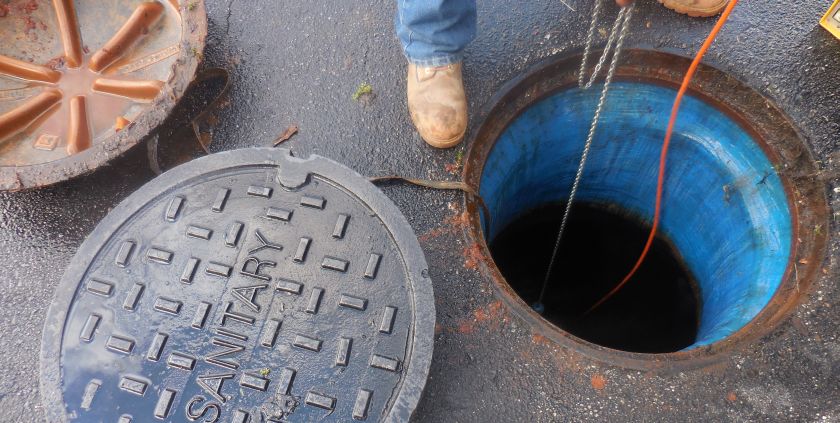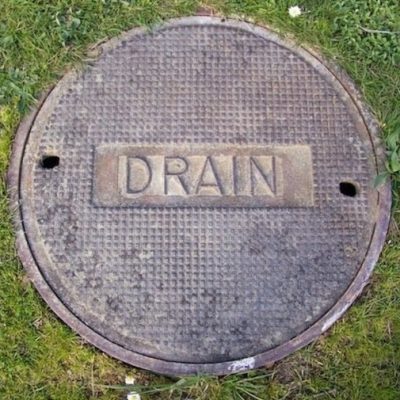Steps for Addressing a Blocked Drain Before Calling Expert Help
Steps for Addressing a Blocked Drain Before Calling Expert Help
Blog Article
Just how do you actually feel when it comes to 8 Tips For Clearing A Blocked Drain?

Introduction
Managing an obstructed drainpipe can be an irritating experience, interrupting day-to-day tasks and possibly triggering damage to your building. However, prior to connecting to plumbing professionals, there are actions you can require to resolve the issue on your own. In this guide, we'll explore do it yourself services and safety nets to take on a blocked drainpipe effectively.
Determining the Issue
The very first step in resolving a blocked drain is recognizing the indicators. Slow drain, gurgling audios, foul odors rising from drains, or water backing up are common signs of a blocked drainpipe. Determining these indicators early can help stop better complications.
Choosing the Right Plumbing Service
When selecting a pipes service, take into consideration factors such as experience, licensing, and customer testimonials. Pick a credible plumbing technician with a record of top quality craftsmanship and transparent pricing practices.
Expense Considerations
The expense of professional drainpipe cleaning company can differ relying on the seriousness of the clog and the plumbing technician's rates. Request quotes from numerous service providers and inquire about any type of added fees to ensure openness and prevent surprises.
Safety and security Precautions
When trying do it yourself drain cleansing, focus on security. Put on protective handwear covers and glasses to prevent contact with dangerous chemicals or bacteria. Never mix various drain cleansing products, as this can produce dangerous fumes.
Situation Researches
Real-life examples show the effectiveness of do it yourself options and the value of prompt professional intervention in solving drain blockages.
Typical Reasons For Blocked Drainpipes
Recognizing the factors that contribute to drain pipes clogs is essential for effective resolution. Usual culprits consist of hair, soap residue, grease, food particles, and foreign objects like sanitary products or paper towels. Tree origins attacking underground pipelines can likewise trigger considerable obstructions.
Do it yourself Solutions
For minor obstructions, numerous do it yourself solutions can be reliable. Pouring boiling water down the drain can aid dissolve oil and particles. Sodium bicarbonate and vinegar or a mix of salt and baking soft drink can serve as all-natural cleaners. Using a bettor or pipes snake to dislodge blockages is one more option.
Devices and Tools
Having the right tools on hand can make DIY drain cleansing a lot more effective. A plunger is a functional tool for clearing obstructions in sinks, commodes, and showers. A plumbing serpent or auger can reach much deeper obstructions, while drainpipe cleansing chemicals can be utilized carefully for stubborn obstructions.
Safety nets
To stay clear of future blockages, adopting preventive measures is important. Set up drain guards or strainers to capture hair and debris prior to they enter the pipelines. Consistently flush drains pipes with warm water to dissolve grease build-up, and prevent dealing with grease or strong waste away.
When to Call a Professional
While DIY services can resolve small clogs, specific indications suggest the requirement for professional aid. Relentless clogs, foul odors despite cleaning up efforts, or several drains pipes backing up all at once are warnings that require experienced intervention.
Conclusion
By adhering to the tips described in this guide, you can properly deal with obstructed drains pipes and protect against future pipes concerns. Whether selecting DIY solutions or looking for specialist aid, prompt activity is crucial to preserving a healthy pipes system and preserving the stability of your home.
How to Clear a Clogged Drain Yourself (And When to Call In the Professionals)
What Can Clog a Drain
Dirt Skin flakes Hair Grease Soap scum Food Offset pipes Tree roots Small objects Mineral buildup DIY Tricks to Unclog a Drain
You can fix this! Once you have identified the source of the clog (or have a vague idea), you can try one or a combination of these fixes in order to clear your plumbing.
Wire Hanger or Snake
Untangle and clear out hair from a drainpipe with a homemade snake. Use a straightened-out wire hanger with a 90-degree angle hook to locate the clog and drag out any unwanted material.
Remember not to push the clog further down to where the wire hanger cannot reach! If you need to follow up with a plunger, give it a try. Your efforts might be more successful after it’s been wire-snaked.
If you want to get fancy and don’t have a wire hanger to spare, head to the store and pick up a hand-operated drain snake. You can get one for $10-$30. It may save you the hassle, and provide additional length to reach deep into the clogged pipe.
Plunger
A cup plunger has a suction cup attached to a wooden handle. The rubber creates a seal around the drain, and increases the pressure force of the plunger.
Plunge for 30-second increments to loosen the clog. This may need to be repeated over the course of 15-20 minutes. Once plunged, run the water to flush the remaining material out of the drain.
Remember– never use a plunger if you have used a chemical drain cleaner. These chemicals can splash up from the force of the plunger and cause serious injury or burns.
Boiling Water
Hot water can sometimes break up materials into a flushable amount. Dirt, grease, and soap buildup requires heat in order to unstick from surfaces.
Take your kitchen kettle and heat your water to a boil. Once it reaches a rolling boil, pour it directly down the drain into the blockage. Carefully follow with plunging, if necessary.
Don’t worry if this takes more than one try! It can often take multiple kettles and repeated plunging in order to clear a particularly stubborn clog.
Chemical Drain Cleaner
As a last resort, pick up a bottle of chemical drain cleaner. Drain-cleaning chemicals are potent, and not very good for the environment.
You may need to wear protective eyewear in gloves before handling your bottle of chemical drain cleaner. Follow the instructions printed on the bottle, and flush with water as soon as the instructions allow. Do not follow with plunging.
Baking Soda and Vinegar
As a safer alternative to chemical drain cleaner, baking soda and vinegar can create a chemical reaction that clears tough clogs.
Combine one cup of cleaning vinegar with one cup of boiling water, and set aside. Once you have done this, pour half a cup of baking soda down the drain. Give the baking thirty seconds to settle and cover a large portion of the problem drain.
Following the baking soda, pour down your vinegar and hot water solution. Once the vinegar and baking soda combine, the mixture will bubble and fix. Let this reaction fizzle in the drain for about an hour.
After an hour, follow with a kettle’s worth of hot water. The heat and liquid should flush out any remaining material.
When to Call a Plumber
If your DIY attempts haven’t cleared your clog drain, it’s time to call in a professional. It’s not worth losing access to your kitchen sink or high-traffic bathroom. A clog in a vital area can keep you from the things you’d rather be doing, and derail your routine.
Anytime a clog is causing water to spread is a time to call in a plumbing service. What starts out as a little bit of water can quickly grow into serious, expensive water damage.
Additionally, a serious clog can result in burst pipes or serious leaks. Make sure you know when to take it seriously!
https://myguysnow.com/how-to-clear-a-clogged-drain-yourself-and-when-to-call-in-the-professionals/

We were brought to that write-up on Tips for Dealing with Clogged Drains and Sewer Lines through a buddy on a different web address. Enjoyed our piece of writing? Please quickly share it. Help someone else find it. Many thanks for your time invested reading it.
Appointment Report this page